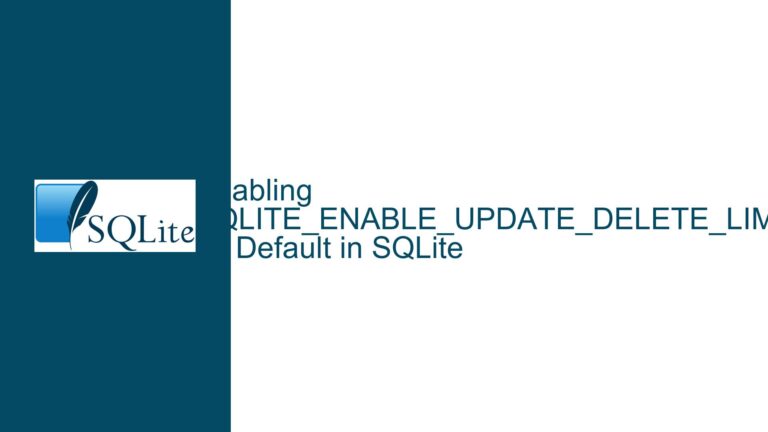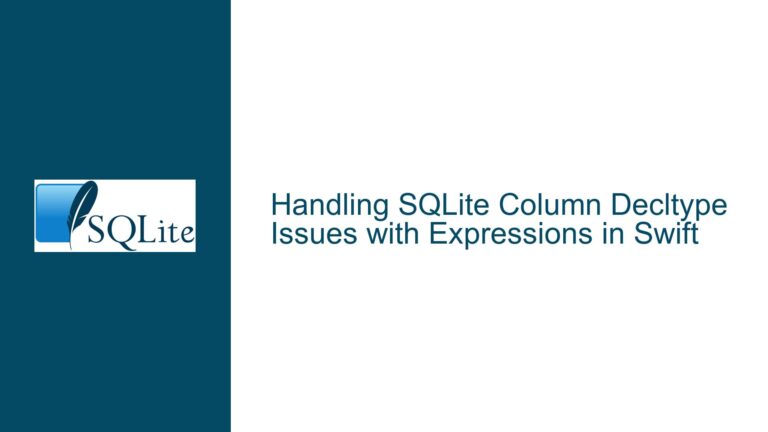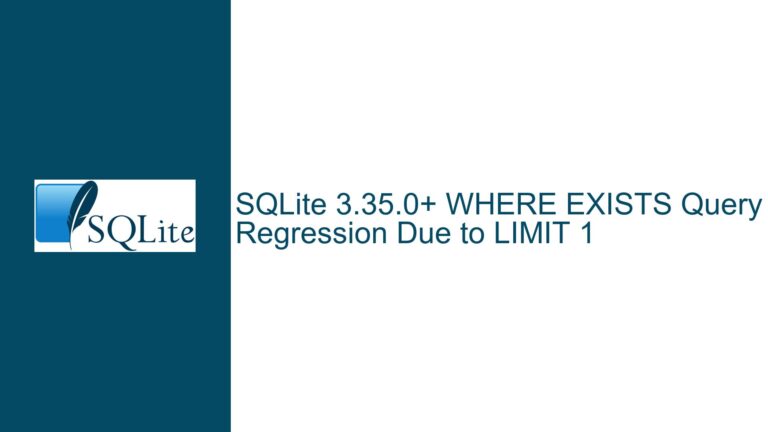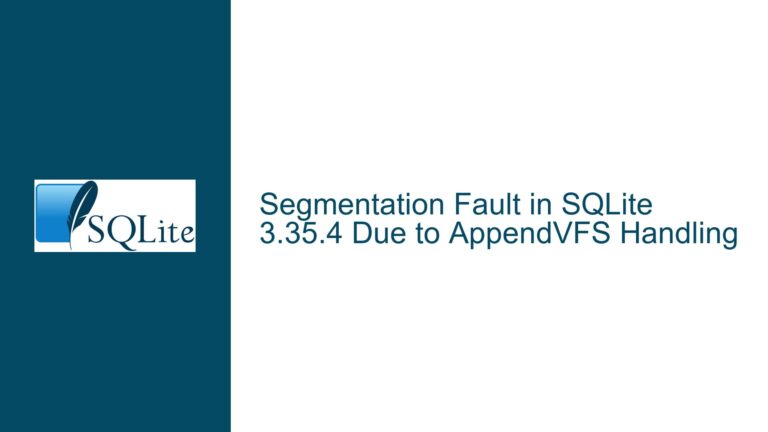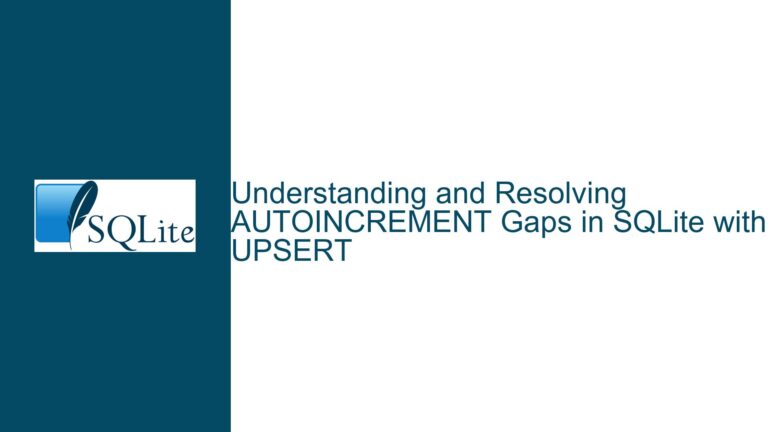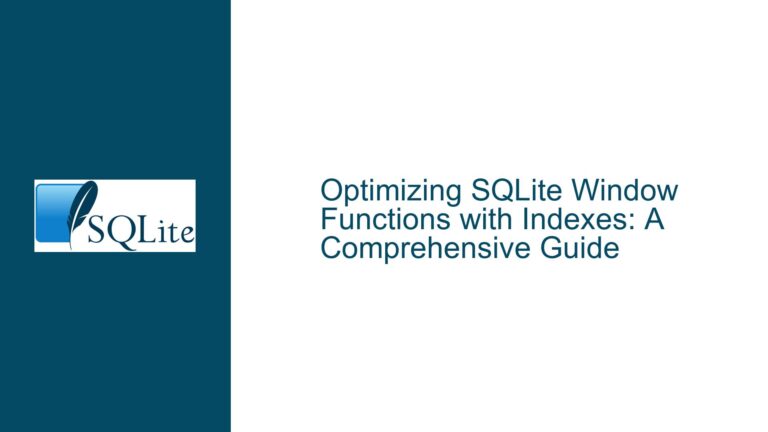Enabling SQLITE_ENABLE_UPDATE_DELETE_LIMIT by Default in SQLite
SQLite’s LIMIT Clause on DELETE and UPDATE: A Feature Overview SQLite is a powerful, lightweight, and widely-used relational database management system. One of its notable features is the ability to use the LIMIT clause with DELETE and UPDATE statements, which allows developers to control the number of rows affected by these operations. This feature is…
